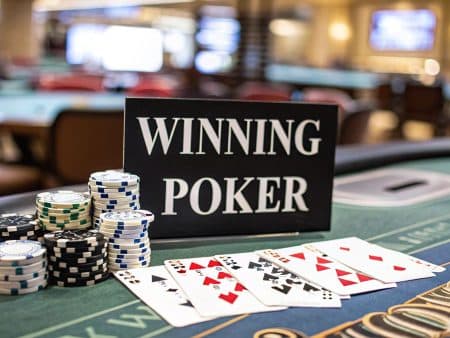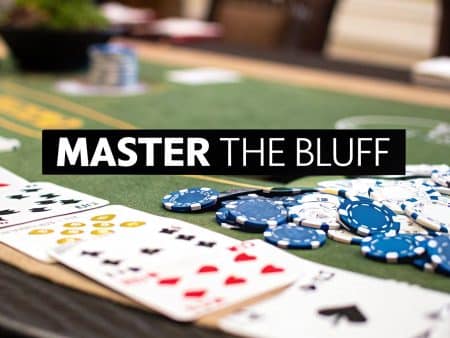Learning the ropes of poker is simpler than you might think.At its core, the game is about winning the "pot"—the collection of bets made during a hand. You can do this in two ways: have the best five-card hand when the cards are revealed, or make everyone else fold their hands before you get there.
A single hand of poker unfolds over a maximum of four betting rounds. Players use a mix of their own private "hole cards" and shared "community cards" to build their best hand.
Your First Hand: A Quick Start Guide to Poker
Welcome to the felt. A hand of poker isn't just a random deal of cards; it's a story told in four parts. Getting a feel for these chapters is the first step to playing with confidence. The entire game boils down to a simple rhythm: get your cards, bet, see more cards, and bet again.
This flow is what gives poker its depth. You aren't just playing the cards in your hand; you're playing against your opponents and what you believe they might be holding. The basic pieces are easy enough for anyone to pick up in just a few minutes.
This visual guide lays out the three pillars of the game: the standard 52-card deck, the 10 hand rankings that decide who wins, and the four betting rounds that drive the action.

As you can see, the whole game is built on these three simple concepts, giving new players a clear roadmap to follow.
Poker Hand Rankings From Strongest to Weakest
Before we dive into the game's flow, you need to know what you're trying to make. The hand rankings are the foundation of poker—they never change, whether you're playing a home game or in the World Series of Poker.
This table breaks down all ten hand rankings, from the unbeatable Royal Flush down to a simple High Card. Memorizing this order is non-negotiable; it's the language of the game.
| Hand Name | Description | Example |
|---|---|---|
| Royal Flush | A, K, Q, J, 10, all of the same suit. The best possible hand. | A♥ K♥ Q♥ J♥ 10♥ |
| Straight Flush | Five cards in sequence, all of the same suit. | 9♦ 8♦ 7♦ 6♦ 5♦ |
| Four of a Kind | Four cards of the same rank, and one side card or "kicker." | K♠ K♥ K♣ K♦ 9♣ |
| Full House | Three cards of one rank and two cards of another rank. | J♠ J♥ J♣ 8♦ 8♠ |
| Flush | Any five cards of the same suit, but not in a sequence. | A♣ 10♣ 8♣ 4♣ 2♣ |
| Straight | Five cards in a sequence, but not of the same suit. | 7♥ 6♠ 5♦ 4♣ 3♥ |
| Three of a Kind | Three cards of the same rank and two unrelated side cards. | 5♠ 5♥ 5♣ K♦ 9♠ |
| Two Pair | Two cards of a matching rank, another two cards of a different matching rank, and one kicker. | Q♠ Q♥ 7♣ 7♦ J♥ |
| One Pair | Two cards of a matching rank, and three unrelated side cards. | A♠ A♥ K♦ 10♣ 5♠ |
| High Card | When you haven't made any of the hands above, the highest card plays. | A♥ K♣ 9♠ 7♦ 4♦ |
Knowing these rankings by heart is your first mission. Every decision you make will be based on how likely you are to make one of these hands and how strong it is relative to what your opponents might have.
The Basic Flow of a Poker Hand
To get the action started, the game uses forced bets called blinds. The player to the immediate left of the dealer button posts the "small blind," and the player to their left posts the "big blind." This simple step ensures there’s always money in the pot to fight for right from the start.
Most poker variants, especially the popular No-Limit Texas Hold'em, follow the same sequence. Here's how it works:
- Blinds are posted, creating the initial pot.
- The Deal: Every player receives two private cards (hole cards).
- Pre-Flop: The first round of betting begins.
- The Flop: The dealer reveals three community cards for everyone to use.
- Post-Flop: The second round of betting takes place.
- The Turn: A fourth community card is dealt.
- Post-Turn: The third round of betting happens.
- The River: The fifth and final community card is revealed.
- Post-River: The last betting round occurs.
- The Showdown: If two or more players are still in, they reveal their cards. The best five-card hand wins the pot.
This entire process is laid out in more detail in this guide to the basic rules and gameplay of poker.
Key Takeaway: The structure of blinds, hole cards, and community cards (flop, turn, river) is the universal language of poker. Once you learn this sequence, you can follow the action at almost any table.
By the end of this guide, you’ll have the knowledge to sit down at a table and play, understanding not just the rules, but the rhythm of the game itself.
What Beats What? A Guide to Poker Hand Rankings

If there's one thing you absolutely must know before sitting down at a poker table, it's the hand rankings. This is the foundation of the entire game—it's how we decide who wins and who loses every single pot.
Every poker hand you make is built from two simple ingredients: the rank of the card (like an Ace or a 7) and its suit (hearts, diamonds, clubs, or spades). The best hands are simply the rarest combinations of these two things.
The Building Blocks: Rank and Suit
The most straightforward hands are all about matching ranks. For instance, a Pair (two cards of the same rank) is always better than just a High Card. Go a step further, and a Three of a Kind beats a pair. At the top of this ladder is the mighty Four of a Kind—a powerhouse hand that's tough to beat.
But you can also build strong hands using sequences or suits:
- Straight: Think of this as a ladder—five cards in a row, like 5-6-7-8-9. The suits can be all mixed up.
- Flush: This one is a family—five cards that all share the same suit, like five diamonds. The numbers don't have to be in order.
A flush is harder to get than a straight, so it's ranked higher. To see how everything stacks up, check out a complete guide to poker hand rankings explained from Royal Flush to High Card to lock in the fundamentals.
The Tiebreaker: It's All About the Kicker
So, what happens if two players both have a pair of Kings? That's when we look at the kicker. The kicker is the highest-ranking card in your hand that isn't part of the main combination, and its job is to break ties.
Let's look at a quick example.
- Player A has A♠ K♥
- Player B has A♣ Q♦
The five community cards on the board are A♦ 8♠ 5♣ 2♥ 10♦.
Both players have a pair of aces, but their best five-card hands are different.
- Player A's hand: A♠ A♦ K♥ 10♦ 8♠ (Pair of Aces, King kicker)
- Player B's hand: A♣ A♦ Q♦ 10♦ 8♠ (Pair of Aces, Queen kicker)
Because a King is higher than a Queen, Player A wins the whole pot. The kicker is a surprisingly important part of the game, coming into play for hands like One Pair, Two Pair, and even Three of a Kind. If the kickers are also the same, the pot is chopped up and split evenly.
Key Takeaway: Pay attention to your kicker! A good one can be the difference between winning a nice pot and splitting it. A strong pair with a weak kicker isn't nearly as valuable as the same pair with an Ace or King on the side.
Navigating the Four Rounds of Betting

Poker is far more than just what you’re holding in your hand. The real game unfolds through betting, and every hand is a small story told across four distinct betting rounds, often called "streets." Learning the flow of these rounds is the key to understanding the game and starting to think like a poker player.
Think of it this way: each street reveals a little more of the story. The pot gets bigger, the decisions get tougher, and the picture of who might have the best hand becomes clearer. This is where skill truly enters the game.
The Five Basic Actions
On your turn, you’ll always have a few core options. These are your tools. What you do sends a message to the rest of the table, so knowing your options inside and out is essential.
Here are the five moves you can make:
- Check: If no one has bet yet in the current round, you can "check." It's like saying, "I'm not betting, but I'm still in." The action just passes to the next person.
- Bet: This is the first wager in a round. You put chips in the middle, and now everyone else has to react to you.
- Call: Someone else has bet, and you want to stay in the hand. To do this, you simply match their bet.
- Raise: You don't just want to match the current bet—you want to increase it. This puts the pressure back on everyone else, forcing them to put more money in to continue.
- Fold: Sometimes, the right move is to give up. Folding means you toss your cards into the muck and are out of the hand. You can't win the pot, but you also can't lose any more chips. It's a vital tool for saving your stack.
The Four Streets of Poker
From the moment you get your cards to the final reveal, a hand of poker moves through a set sequence.
1. Pre-Flop
This is where it all begins. You’ve just been dealt your two private "hole cards," and nothing else is on the table yet. The very first round of betting kicks off, starting with the player just to the left of the big blind. Your decision here—to call, raise, or fold—is based entirely on the potential of those first two cards.
2. The Flop
Once the pre-flop action is done, the dealer lays three community cards face-up for everyone to see. This is "the flop," and it's often the most game-changing moment. Suddenly, you have a much better idea of how strong your hand could be. A new betting round starts with the first active player to the dealer's left.
3. The Turn
Next comes the "turn," where a fourth community card is dealt. This single card can complete someone's straight or flush draw, or it could be a total blank that changes nothing. Another round of betting ensues, following the same pattern as the flop. Things are getting serious now.
4. The River
Finally, the dealer reveals the fifth and final community card, known as "the river." The board is now complete. One last round of betting takes place. If there's more than one player left after the betting stops, we head to the showdown. Everyone shows their cards, and the best five-card hand scoops the pot.
The Power of Position: Your seat at the table matters—a lot. The person who acts last in a betting round has a huge informational advantage because they get to see how everyone else acts before they have to make a decision. This is one of the most important strategic concepts in poker, and mastering it separates the pros from the amateurs.
Using Basic Odds to Make Smarter Decisions

Don't let the word "odds" scare you off. Poker isn't about doing complex calculus in your head; it's really about making educated guesses. Getting a handle on some simple math is the first step toward trading blind guesses for calculated, confident plays at the table.
It all starts with learning to count your "outs." Think of outs as your winning lottery tickets. They’re the specific cards still left in the deck that will take your current hand and turn it into a likely winner.
Counting Your Outs: A Quick Example
Let's say you're holding A♥ 7♥. The dealer lays down the flop, and the board shows K♥ 9♥ 2♣. You've got four hearts—you're just one away from a flush, which is a very strong hand. So, how many cards left in the deck will complete that flush?
A standard deck has 13 hearts. Right now, you know where four of them are: the two in your hand and the two on the board.
13 total hearts – 4 hearts you can see = 9 outs
That’s it. There are nine specific cards left that will give you the flush. Knowing you have nine outs is the first piece of the puzzle. The next question is, what are the chances of one of those nine cards actually appearing?
The Rule of 4 and 2
This is where a brilliant little shortcut comes in handy. The "Rule of 4 and 2" is a fantastic tool for getting a quick estimate of your chances of hitting one of your outs. Honestly, it's one of the most useful things a beginner can learn to start playing more strategically.
Here's how it works:
- On the Flop: Take your number of outs and multiply it by 4. This gives you a rough percentage of hitting your hand by the end (on either the turn or the river).
- On the Turn: Now that there's only one card left to come, multiply your outs by 2. This is your approximate chance of hitting it on the river.
Let's go back to our flush draw example. We have nine outs.
- On the Flop: 9 outs x 4 = 36%. You have about a 36% chance of making your flush.
- On the Turn: 9 outs x 2 = 18%. If you miss on the turn, you now have about an 18% chance on the river.
Suddenly, you have real information to work with. That 36% tells you that you have a little better than a 1-in-3 shot of hitting your hand after the flop. This knowledge is power. It's what helps you decide if calling an opponent's bet is a smart move or a costly mistake.
To really dig into this, you'll want to learn how to compare these odds to the money in the pot. You can learn exactly how to use pot odds and outs to make profitable calls in our detailed guide.
Common Poker Terms Every Beginner Should Know
Jumping into a poker game for the first time can feel like listening to a foreign language. Players are constantly tossing around words like “button,” “pot,” and “showdown,” and you need to know what they mean just to keep up.
This section is your quick-start guide to the language of poker. Think of it as a crash course in poker-speak, so you can follow the action and start thinking strategically from your very first hand.
Core Gameplay Terms
These are the terms you'll hear in pretty much every hand played. They are the building blocks of the game, describing the money in play and the key positions at the table.
-
The Pot: This is simply the pile of chips in the middle of the table. All bets from every player go into the pot, and the winner of the hand gets to scoop it all up.
-
The Blinds: Before any cards are even dealt, two players have to make a forced bet. These are called the Small Blind and the Big Blind, and they guarantee there’s always something to play for, creating action right from the start.
-
The Button: This is the plastic disc that rotates clockwise around the table after each hand. It marks the official dealer for that hand, and it's the most powerful spot to be in. Why? Because the player on the button gets to act last in most betting rounds.
Key Insight: Being "on the button" is the most profitable position in poker. Acting last gives you the most information, as you get to see what every other player does before you have to make your own decision.
Action and Showdown Terms
Once the cards are dealt and the betting starts, you'll hear a whole new set of words. These terms describe how the game flows and how a hand ultimately ends.
-
Showdown: This is the big reveal at the end of a hand. If two or more players are still in the game after the final bet, it's time for the showdown. Everyone still in flips their cards face-up, and the best five-card hand wins the pot.
-
Kicker: Think of the kicker as a tie-breaker. Let's say you and another player both have a pair of Kings. Who wins? The player with the highest-ranking side card (the kicker) takes the pot. A strong kicker can mean the difference between winning a massive pot and chopping it in half. You can dive deeper into these game-changing details in our guide explaining six things you need to know about poker.
To help you get comfortable with the lingo, here’s a quick-reference table with some of the most important terms you'll encounter.
Essential Poker Terminology
| Term | What It Means |
|---|---|
| Ante | A small, forced bet every player puts in the pot before a hand begins. |
| All-In | When a player bets all of their remaining chips. |
| Flop | The first three community cards dealt face-up on the table for all players to use. |
| Turn | The fourth community card dealt face-up. |
| River | The fifth and final community card dealt face-up. |
| Hole Cards | The private cards dealt face-down to each player. |
| Muck | To discard your hand without showing it. You "muck" your cards when you fold. |
| Nuts | The best possible hand you can make at any given moment in the game. |
Getting these terms down is your first step toward feeling confident at the table. Once you know the language, you can focus on what really matters: playing your cards and reading your opponents.
How to Dodge the Most Expensive Newbie Traps
Every poker player makes mistakes. It’s just part of the learning curve. But you can sidestep the most common—and costly—traps that trip up almost every new player right from the get-go. Building a solid foundation now will save you a ton of money and frustration down the road.
The path to getting better starts by steering clear of a few major pitfalls. We're talking about playing way too many garbage hands, being too timid with your monsters, and letting your emotions drive your decisions instead of cold, hard logic.
Key Takeaway: Discipline is your single most valuable asset at the poker table. The best players aren't just getting lucky; they're consistently making smarter decisions than everyone else by killing emotional plays and sticking to a solid game plan.
Mistake #1: Playing Too Many Weak Hands
The single biggest leak in a beginner's game is feeling the need to play every single hand dealt to them. It's tempting, I get it. You want to see the flop and be in on the action. But the hard truth is that most starting hands in Texas Hold'em are trash.
Being selective before the flop is the very first step toward becoming a winning player.
Don't fall into the trap of playing hands like a King-four or a Jack-seven just because they "look kinda good." You need to focus on premium starting hands—think big pairs (Aces, Kings, Queens), high-card combos (Ace-King, Ace-Queen), and connected cards of the same suit. Remember, folding isn't a sign of weakness. It's a strategic move to protect your chips for a spot where you have a real edge. This disciplined approach is critical whether it's your first time playing or you're organizing a bigger event. You can learn more by checking out our guide on the ultimate home poker game setup and rules.
Mistake #2: Being Too Passive
Alright, so you’ve waited patiently and finally got a monster hand. Now is not the time to get shy! A classic beginner mistake is to just call bets, hoping to see the next card on the cheap. This is called playing passively, and it's a dangerous habit that invites opponents with weaker, drawing hands to stay in the pot and catch a miracle card to beat you.
When you have a strong hand, you need to bet and raise. Be the aggressor. This does two crucial things for you:
- It Builds a Bigger Pot: Simple math. When you're likely to have the best hand, you want to get as much money in the middle as possible.
- It Pushes Weaker Hands Out: You protect your hand by making it too expensive for opponents to chase long-shot draws. Make them pay for the privilege of seeing the next card.
This is a balancing act that the pros have mastered. To avoid being easily read, you'll see top players maintain a fold to 3-bet percentage around 55% or even lower. And it's no surprise that consistent winners often have a Win at Showdown (W$SD) rate between 52%-66%—meaning they're dragging the pot more than half the time the cards are flipped over at the end. Learning when to put the pedal to the metal is what separates the amateurs from the sharks.
Poker Rules FAQ: Your Questions Answered
Once you’ve got the basics down, you’ll inevitably run into weird situations at the table that leave you scratching your head. It happens to everyone. Let's walk through some of the most common questions new players have so you can feel confident when they pop up.
Getting these specific poker rules straight will save you from making some expensive mistakes down the road.
What Happens When Players Have the Same Hand?
This is probably the most common question. What if two people show down the exact same hand? Easy—the pot is split right down the middle.
Imagine the community cards are A-K-Q-J-10, making a Royal Flush possible for anyone. If two players are still in the hand at the end, they both have a Royal Flush and will simply "chop" the pot, each taking half.
My Full House Lost? How?
It’s a gut-wrenching feeling, but it happens. When two players have the same type of hand, like a full house or a flush, you have to look closer to see who wins.
With a full house, it’s the player with the better three-of-a-kind who scoops the pot. So, Aces full of Kings (A-A-A-K-K) will always beat Kings full of Aces (K-K-K-A-A). It’s all about the trips.
The same idea applies to a flush. If two players have a spade flush, the winner is whoever holds the single highest spade. An Ace-high flush beats a King-high flush every time.
Key Takeaway: Poker has built-in tiebreakers for almost everything. When hands look similar, the winner is determined by the highest-ranking cards that make up that hand.
For a deeper look into more of these tricky scenarios, The Ultimate Beginner's Guide to Playing Online Poker is a fantastic resource with more examples.
Are There Specific Rules for Raising?
Absolutely, and they’re critical to know. When it's your turn to act, your raise has to be at least the size of the last bet or raise made in that same round.
Let's say a player before you bets $10. The minimum you're allowed to raise is another $10, making your total bet $20. You can’t just raise to $15. This rule keeps the action clean and prevents players from making tiny, annoying raises that stall the game.
Here at PokerSites.org, our whole goal is to help you get better at this game. Check out more of our expert guides and reviews to take your skills to the next level today at https://www.pokersites.org.
Article created using Outrank











